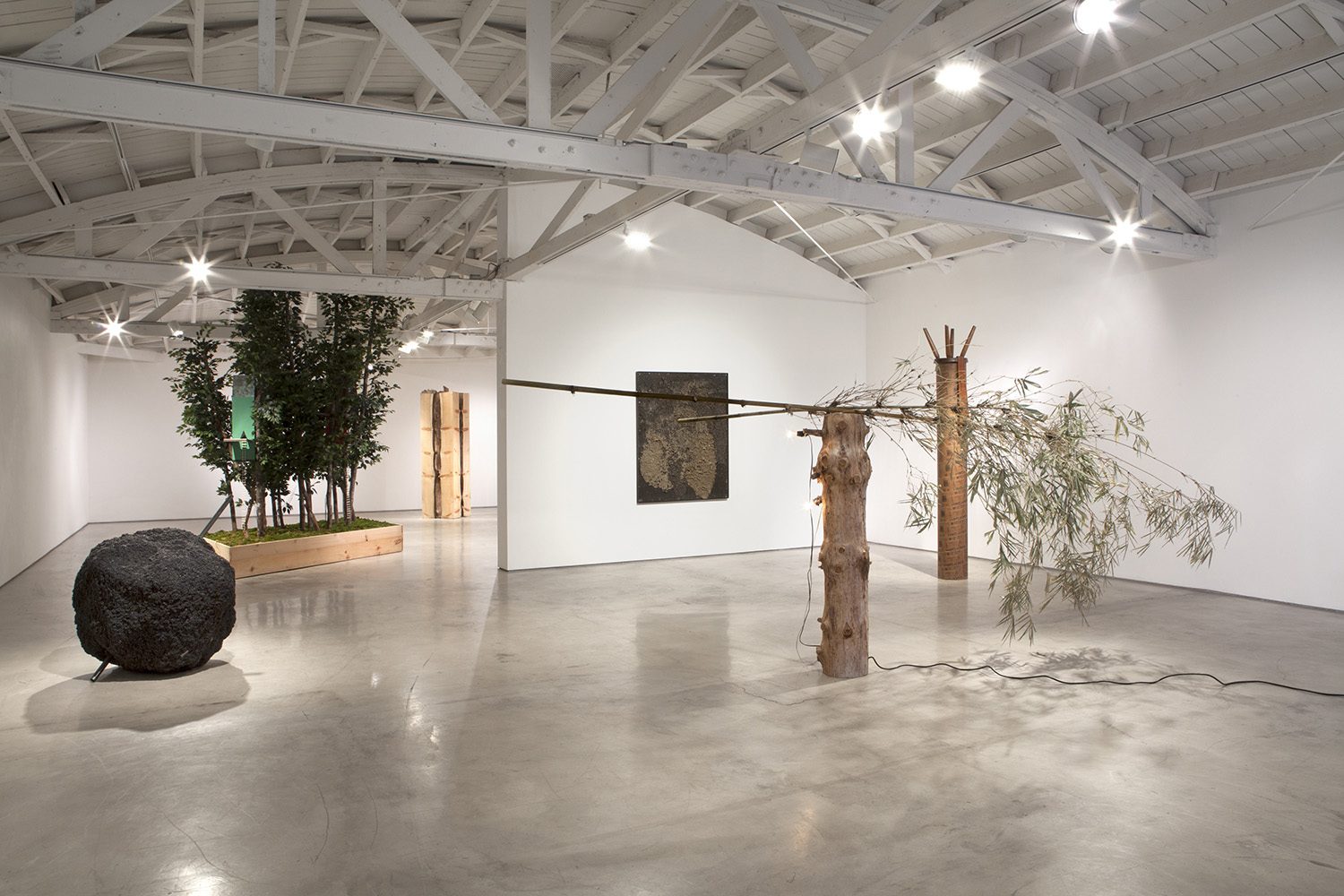
Installation view
Where the Sidewalk Ends, 2017
Photograph courtesy of Morán Morán
Where the Sidewalk Ends
Where the Sidewalk Ends is a four-person exhibition associating artworks that are evocative of a desire to create parity and connectedness with the natural world or to locate an intersection therein. Through varied mediums and methods, these four artists – Terence Koh, Dennis Oppenheim, Virginia Overton, and Nick van Woert – approach the tension between ecological connectedness and the progress of civilization. Subsequently, the works included in this exhibition present a range of conditional responses that span from exploration and interaction, to repercussions and impermanence. However, these artists do not endeavor to generate homages to ecology or directly reference an environmentalist agenda, rather, the works visually contend with our origins – a human’s nature.
Terence Koh‘s work combines a diverse range of media, sometimes culminating in durational performances and large-scale installations. He creates environments where memory and imagination merge with history and humanity, exploring subjects such as nature, mythology, religion, identity, power, and sexuality – often in a provocative manner. Koh’s work was included in the 2004 Whitney Biennial, and the 2008 Yokohama Triennial. He held solo exhibitions at MUSAC, León, Spain (2008); Schirn Kunsthalle, Frankfurt, Germany (2008); Whitney Museum of American Art, New York (2007); Kunsthalle Zürich, Switzerland (2006); and at the Vienna Secession, Austria (2005). His work is in the permanent collections of the Armand Hammer Museum, Los Angeles; Museum of Contemporary Art, Los Angeles; Museum of Modern Art, New York; Tate Modern, London; and the Whitney Museum of American Art, New York.
Dennis Oppenheim moved to New York City from the Bay Area of California in 1967, later becoming a leader in Land Art. Oppenheim’s practice also included writing, action, performance, video, film, photography, and installation. Oppenheim’s works are regularly shown in international group exhibitions at venues such as the Museum of Modern Art, NY; Centre George Pompidou; Metropolitan Museum of Art; Venice Biennale (1976, 1980, and 2001); and at Documenta in Kassel (1972, 1977). He had solo exhibitions at the Tate Gallery, London (1972); the Musée d’Art Moderne de la Ville de Paris (1979); the Whitney Museum of American Art (1983, 2003); and the Art Institute of Chicago (2016). Major retrospectives were presented at the Stedelijk Museum in Amsterdam (1974); Museum Boijmans Van Beuningen in Rotterdam (1976); Musée d’Art Contemporain in Montreal (1978); P.S.1 in New York (1991); and at Storm King Art Center (2016).
Virginia Overton‘s work includes installation, sculpture, and photography, often conceived intuitively as a direct response to her physical presence in a particular space. Through a process of trial and error, she creates sculpture that is performative and sometimes obstructing, dividing, or adjoining to architecture. Both dramatic and minimal, her carefully balanced assemblages clearly dialogue with minimalism. Using balance, weight, and gravity as the foreground, her sculptures harness what she describes as a “natural push and pull in materials.” Virginia Overton was born in Nashville, Tennessee in 1971, and lives and works in Brooklyn, New York. She’s had solo exhibitions at the Whitney Museum of American Art (2015); Storm King Art Center, New Windsor, NY (2014); Museum of Contemporary Art, North Miami (2014); Westfälischer Kunstverein, Munster (2013-4); Kunsthalle Bern (2013); The Power Station, Dallas (2013); and at the Power House, Memphis (2007).
Nick van Woert‘s work focuses on topics concerning the natural environment, material chemistry, and the progress of civilization. His interests include ecology, geology, and the complex history of terrain – one that is both inherent and fabricated. He explores the relationship between artificial substance and the environment, while considering the possible results of those liaisons affecting anatomy or mental disposition. His work examines deep ecology, radical environmentalism, and dark histories of the American landscape – advancing subtext by proposing a narrative: a dissection of the architecture of anarchy. Nick van Woert completed residencies at Zabludowicz, in Sarvisalo, Finland, and at The Edward Albee Foundation in Montauk, NY. His work has shown widely, both nationally and abroad, including recent exhibitions at Gemeentemuseum, The Hauge (2016), Berman Museum, PA (2016); Garage Rotterdam, Rotterdam (2015); Katonah Museum, Katonah, NY (2015) ; the Nevada Museum of Art, Reno, NV (2015); and at MAMbo, Bologna, Italy (2014).
Dates
April 01 - May 19, 2017Opening Reception
Saturday, April 01, 6-8pmLocation
937 N. La Cienega Blvd.Los Angeles, CA 90069
Artists
Terence Koh
Dennis Oppenheim
Virginia Overton
Nick van Woert
Installation Views
All images: Where the Sidewalk Ends, 2017. Photography courtesy of Morán Morán
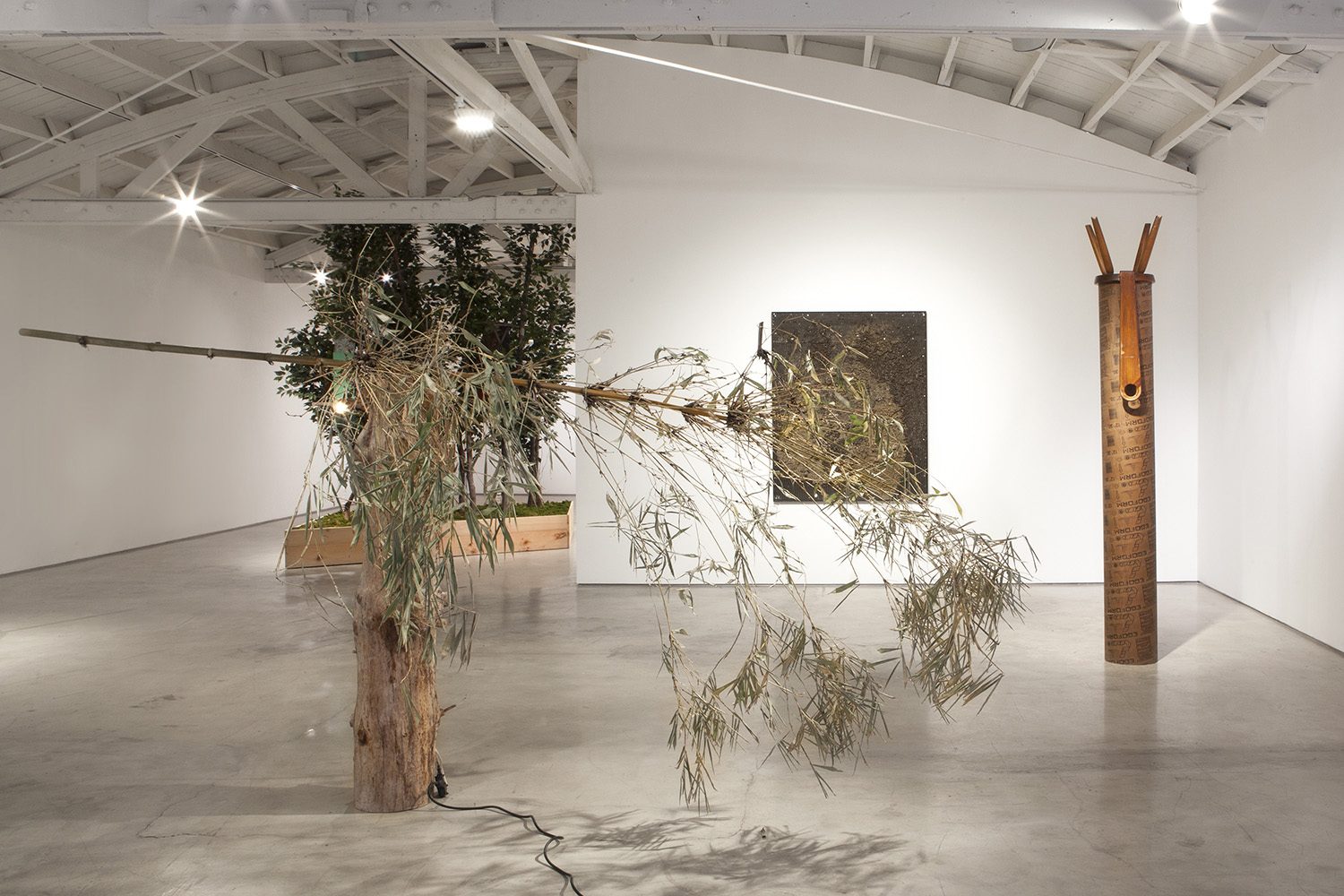
Installation view
Where the Sidewalk Ends, 2017
Photograph courtesy of Morán Morán
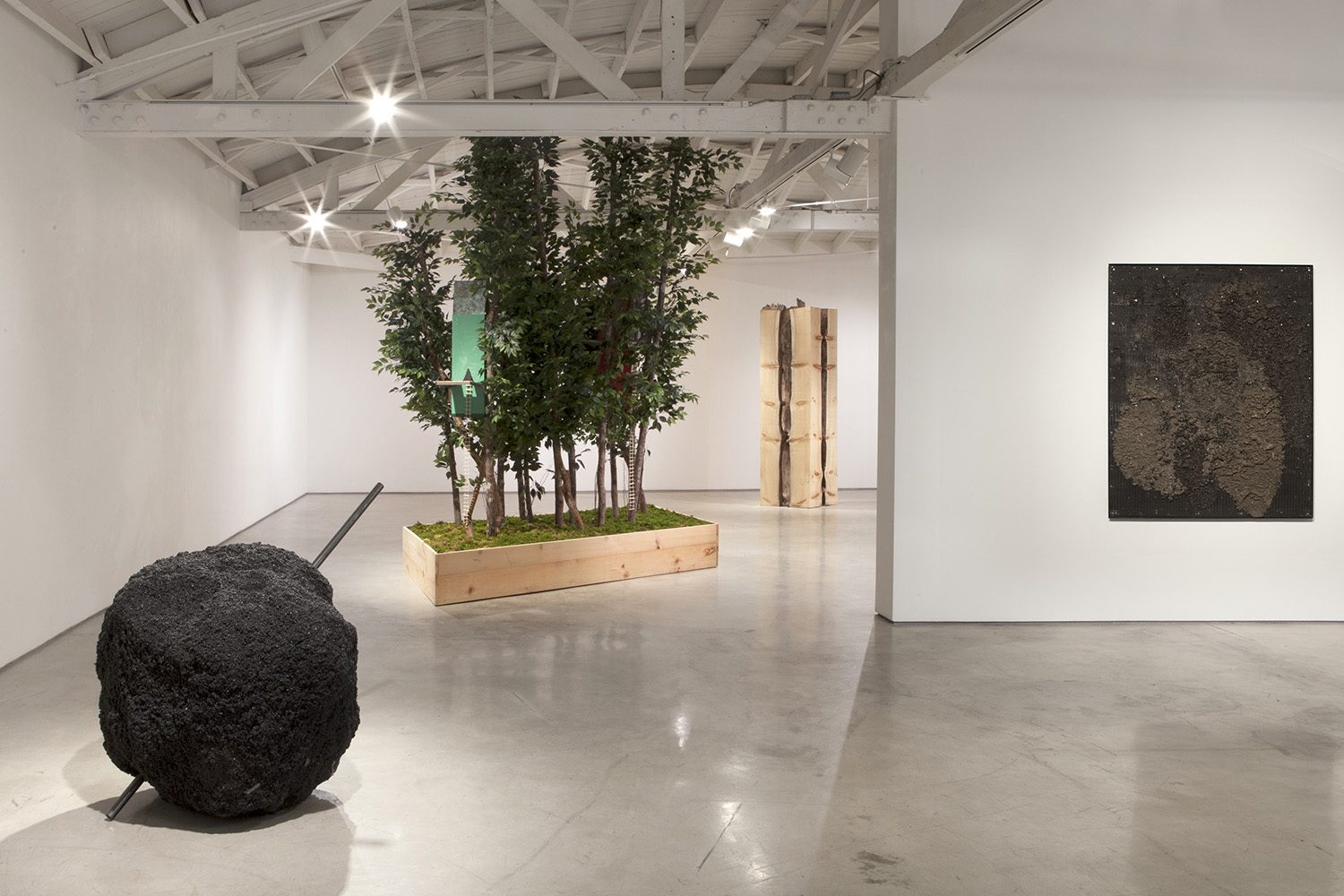
Installation view
Where the Sidewalk Ends, 2017
Photograph courtesy of Morán Morán
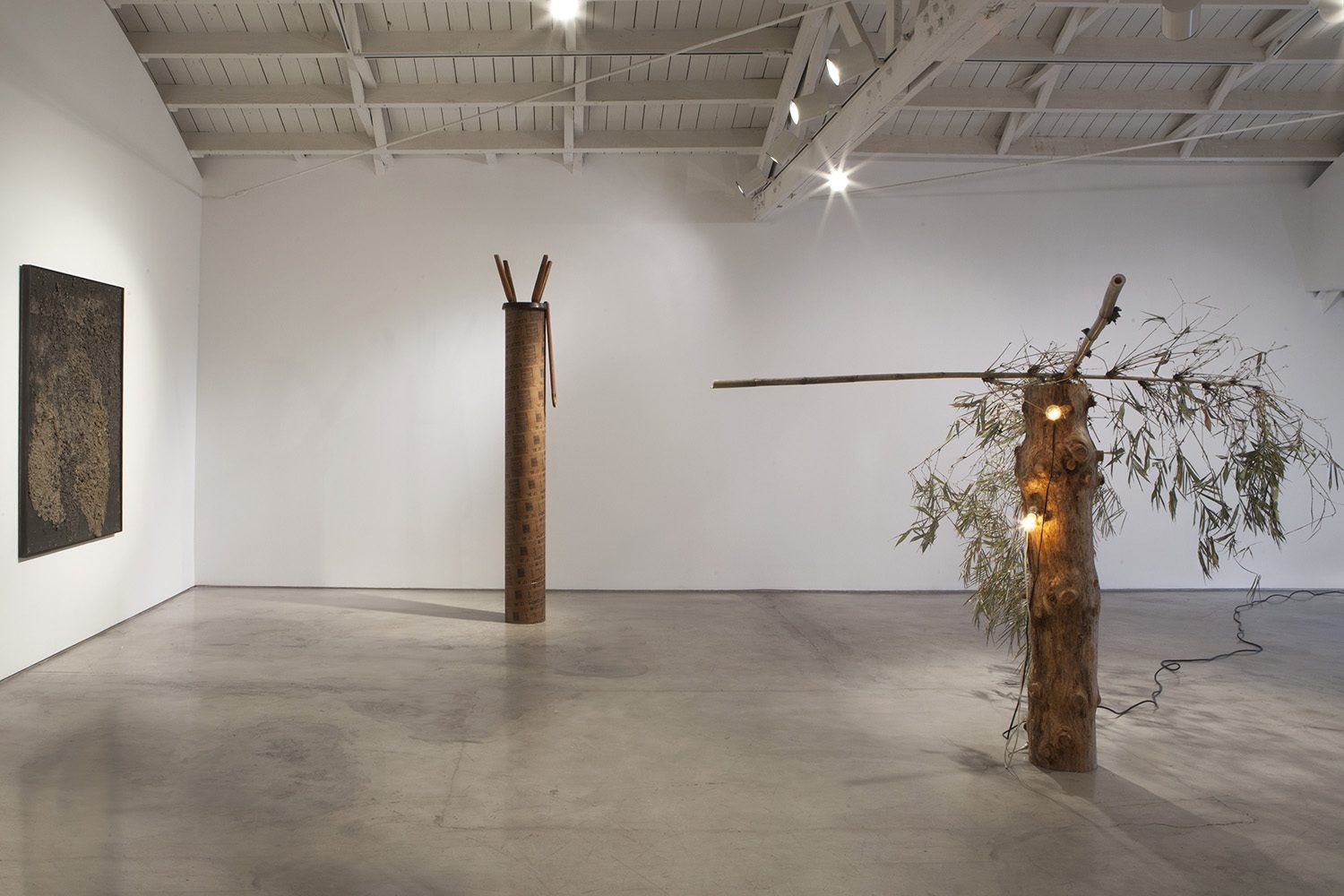
Installation view
Where the Sidewalk Ends, 2017
Photograph courtesy of Morán Morán
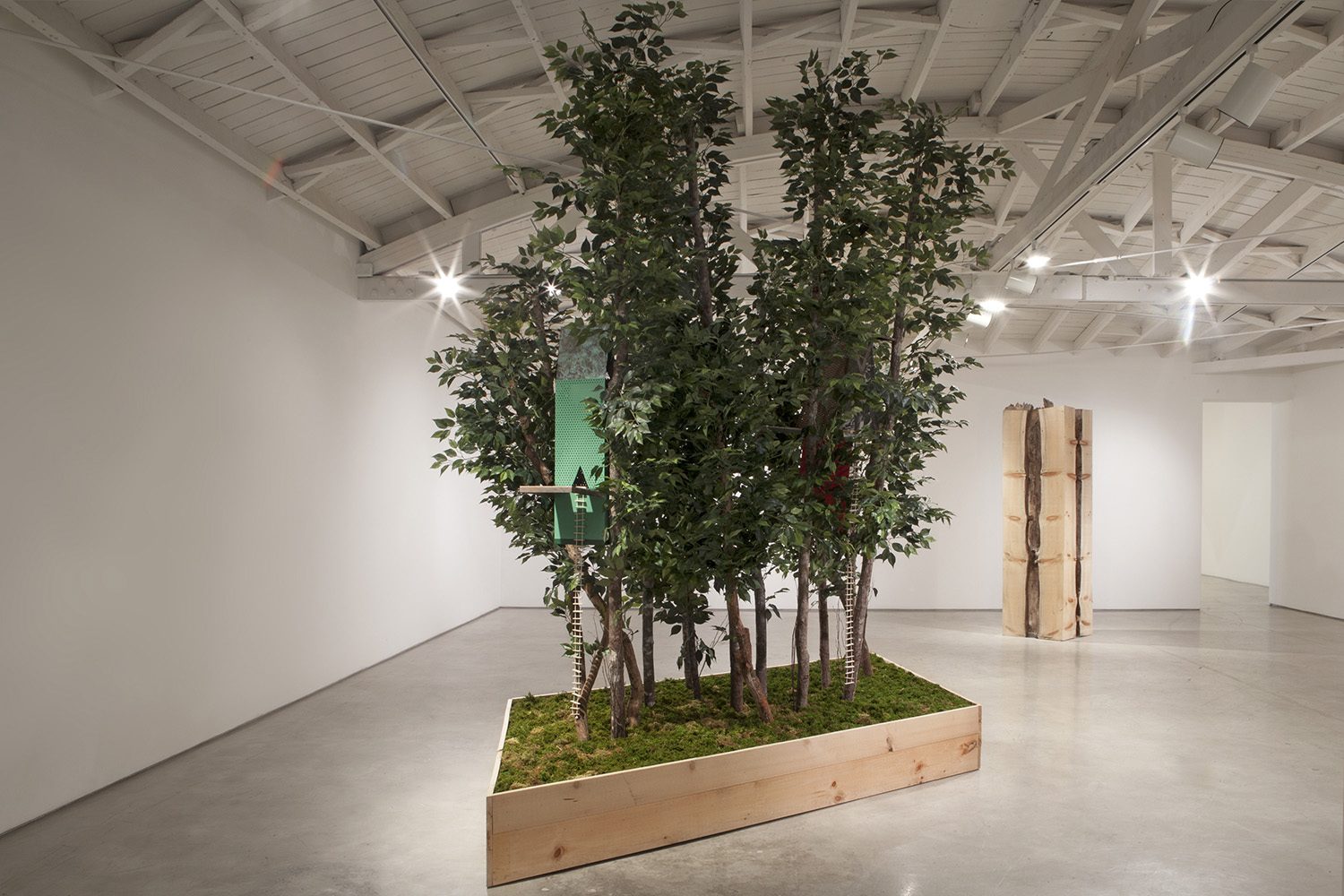
Installation view
Where the Sidewalk Ends, 2017
Photograph courtesy of Morán Morán
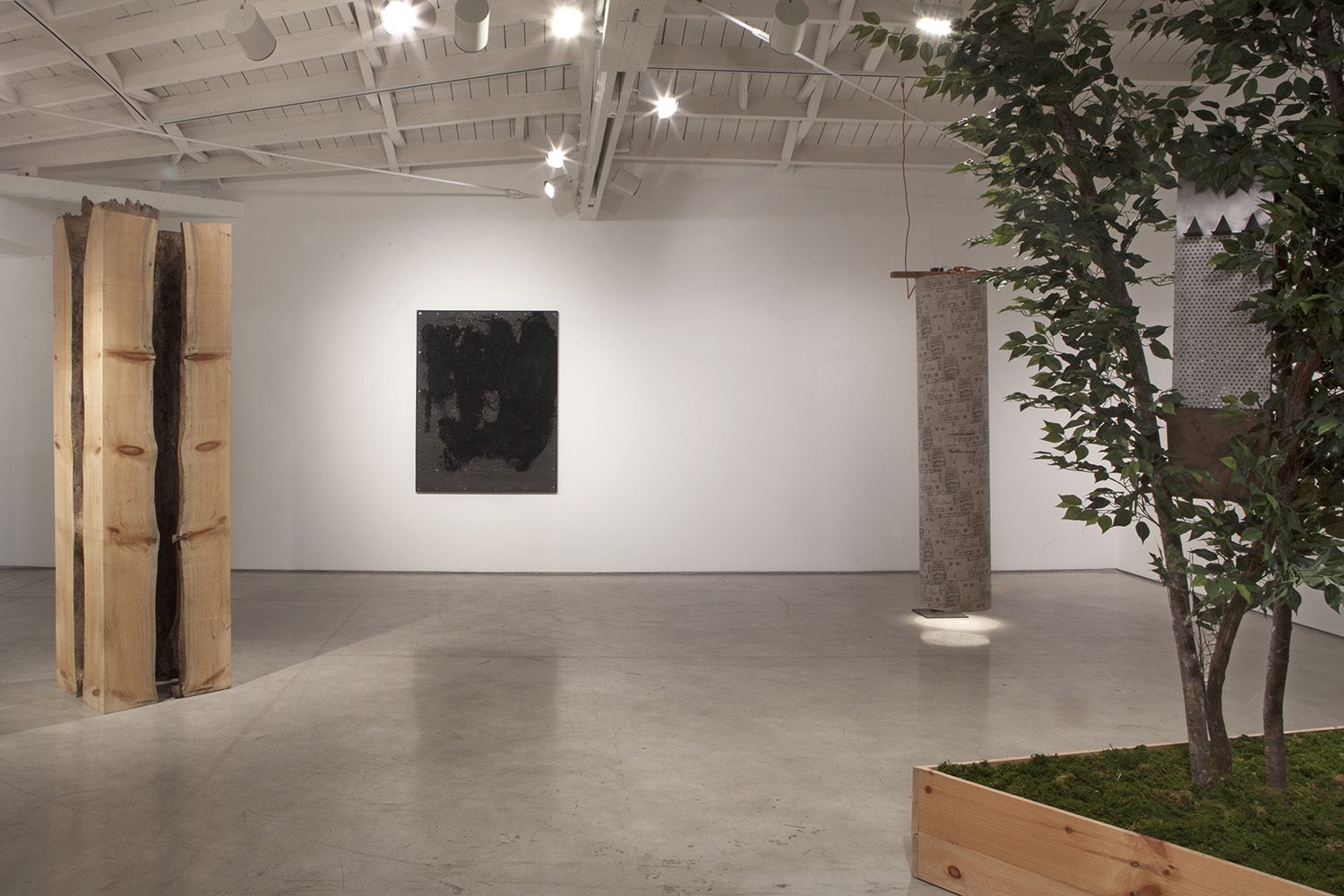
Installation view
Where the Sidewalk Ends, 2017
Photograph courtesy of Morán Morán
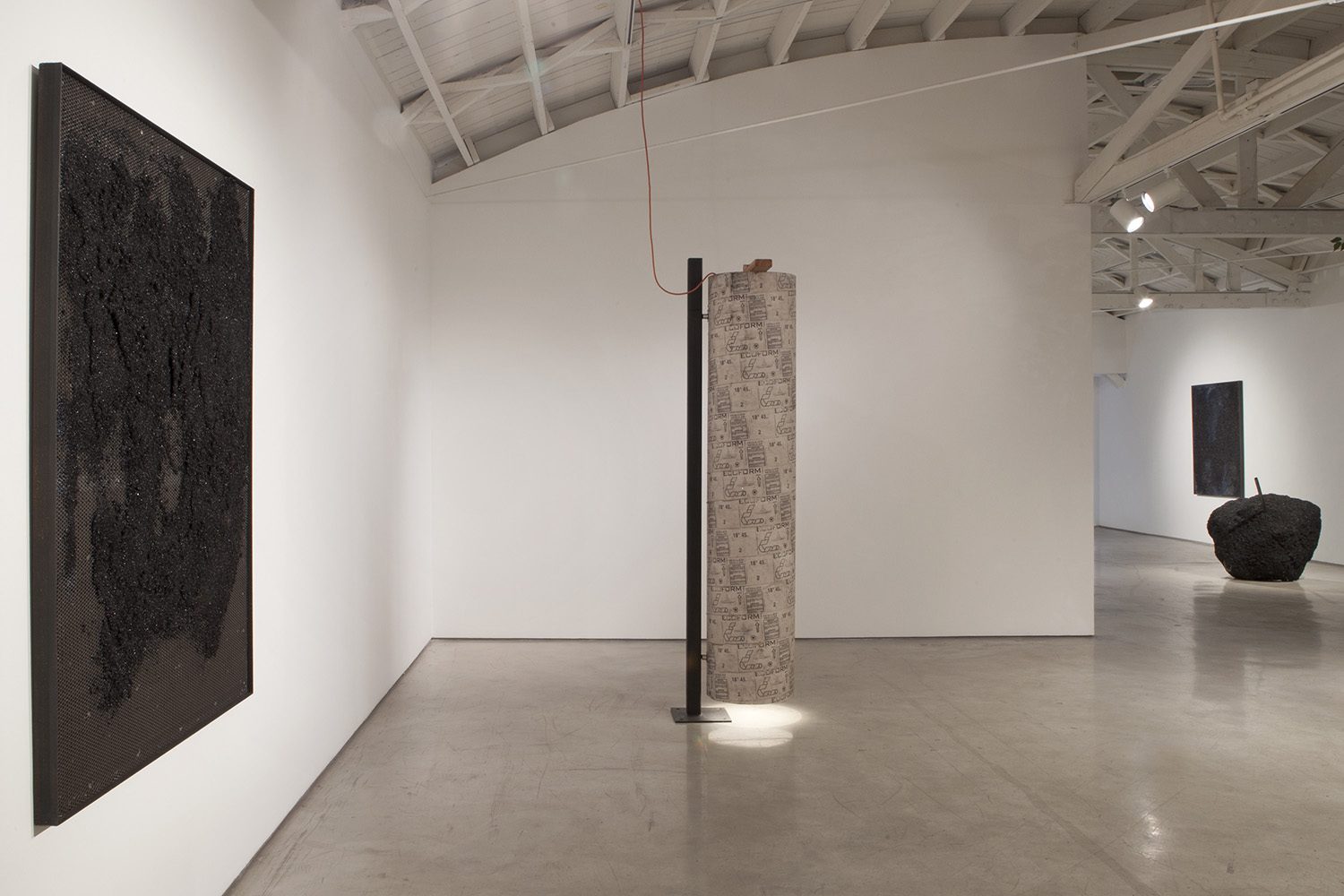
Installation view
Where the Sidewalk Ends, 2017
Photograph courtesy of Morán Morán

Installation view
Where the Sidewalk Ends, 2017
Photograph courtesy of Morán Morán
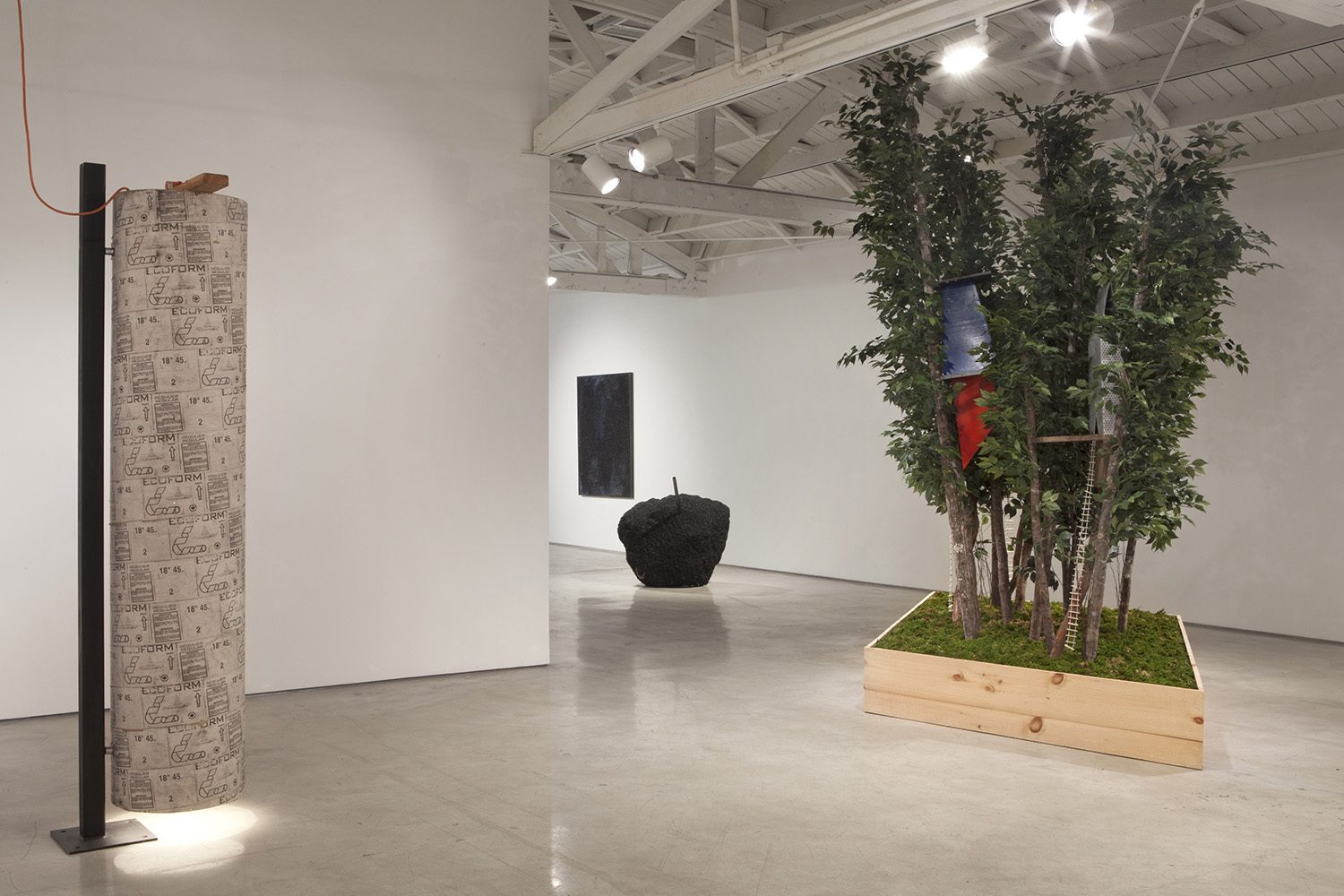
Installation view
Where the Sidewalk Ends, 2017
Photograph courtesy of Morán Morán
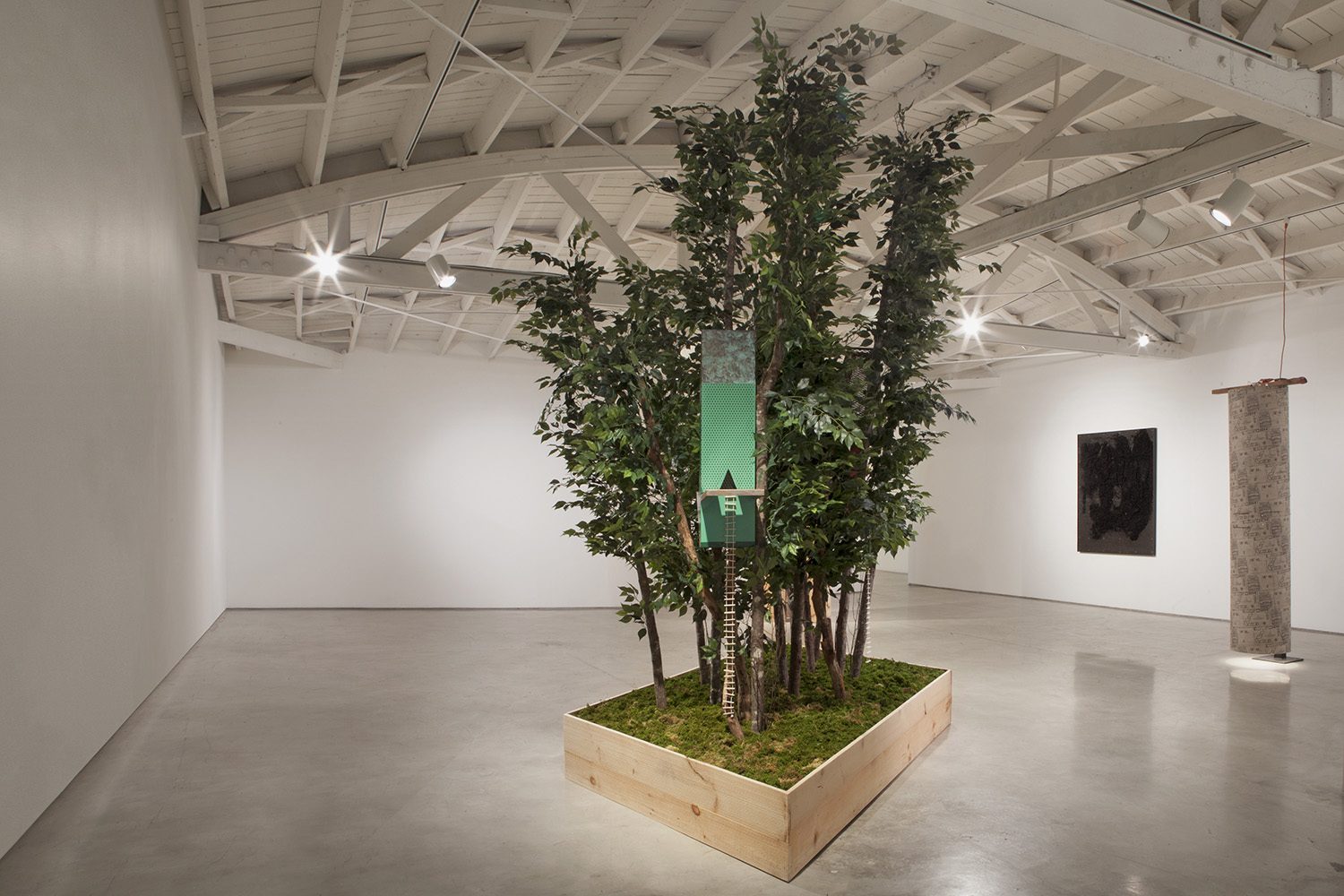
Installation view
Where the Sidewalk Ends, 2017
Photograph courtesy of Morán Morán
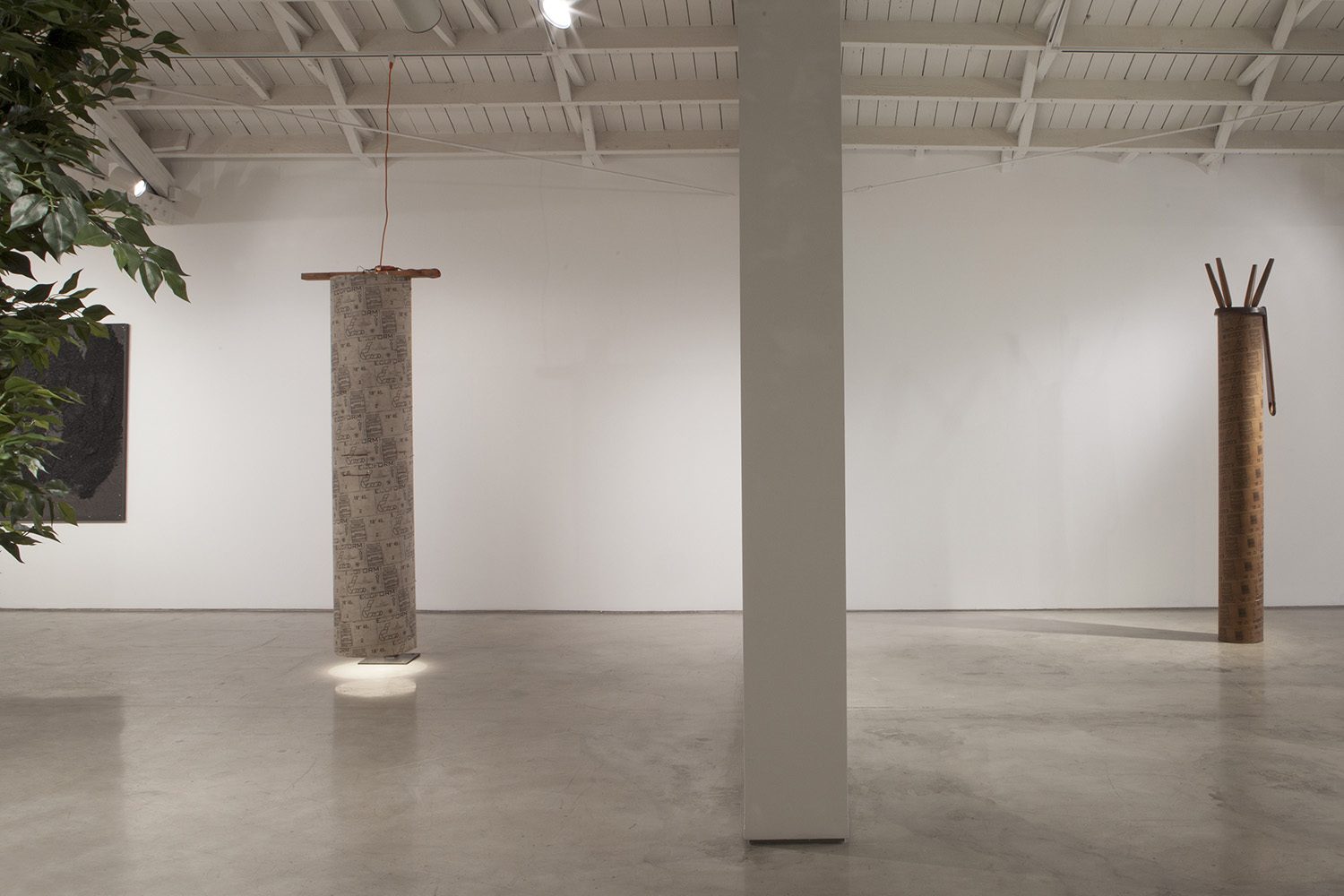
Installation view
Where the Sidewalk Ends, 2017
Photograph courtesy of Morán Morán
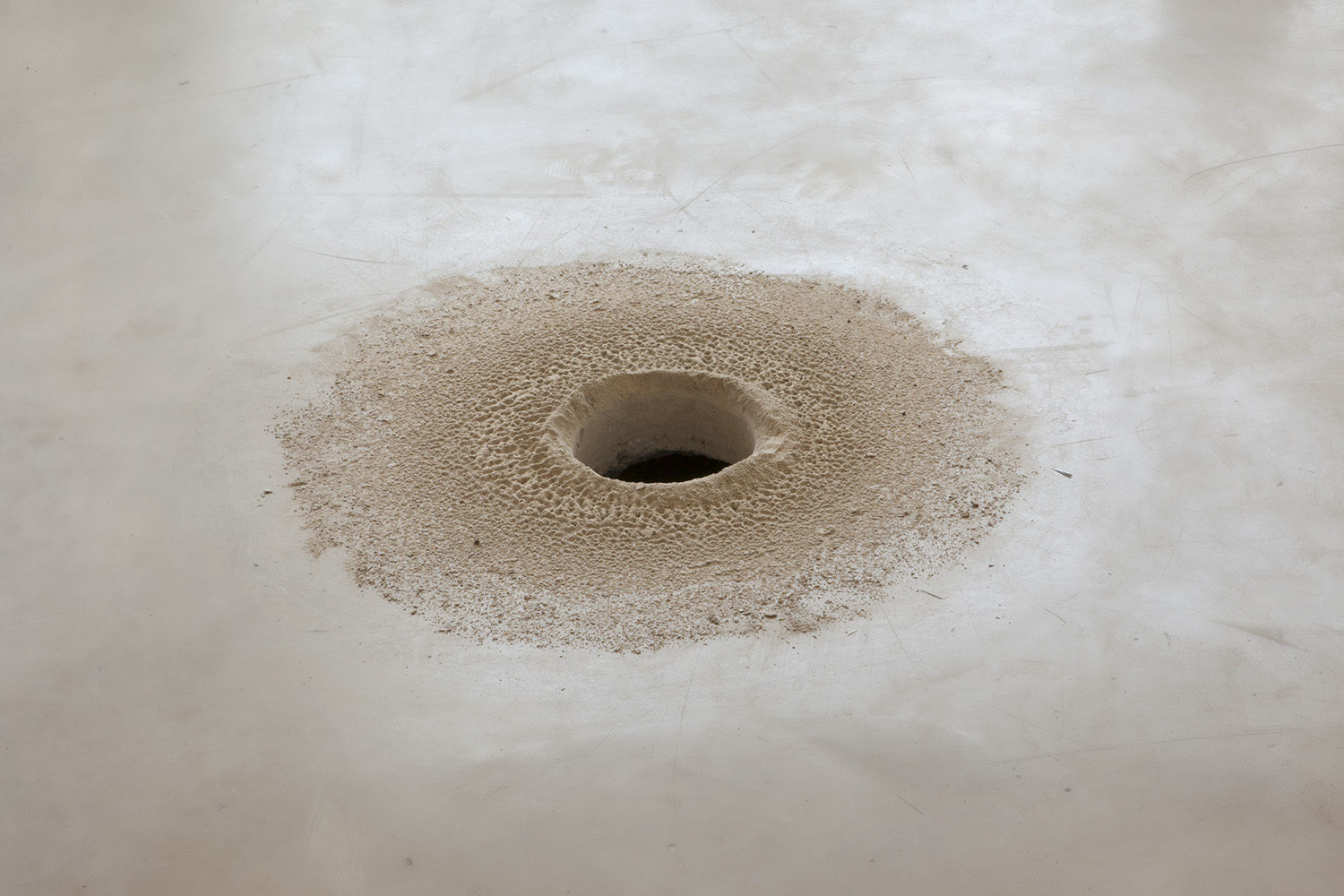
Installation view
Where the Sidewalk Ends, 2017
Photograph courtesy of Morán Morán
Artworks
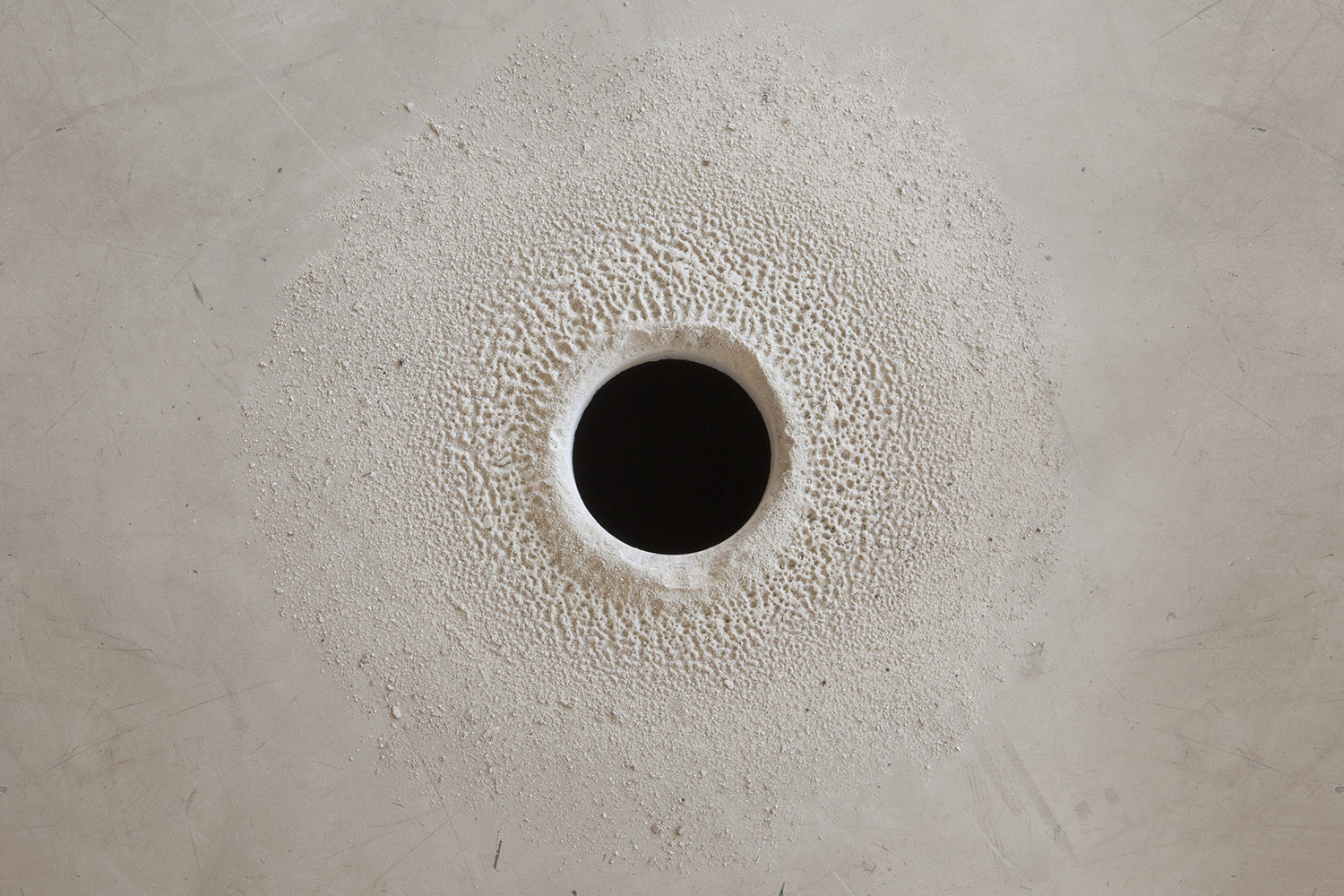
Terence Koh
hole, 2017
Negative space
5 inches diameter, depth variable
(13 cm diameter, depth variable)
Photograph courtesy of Morán Morán
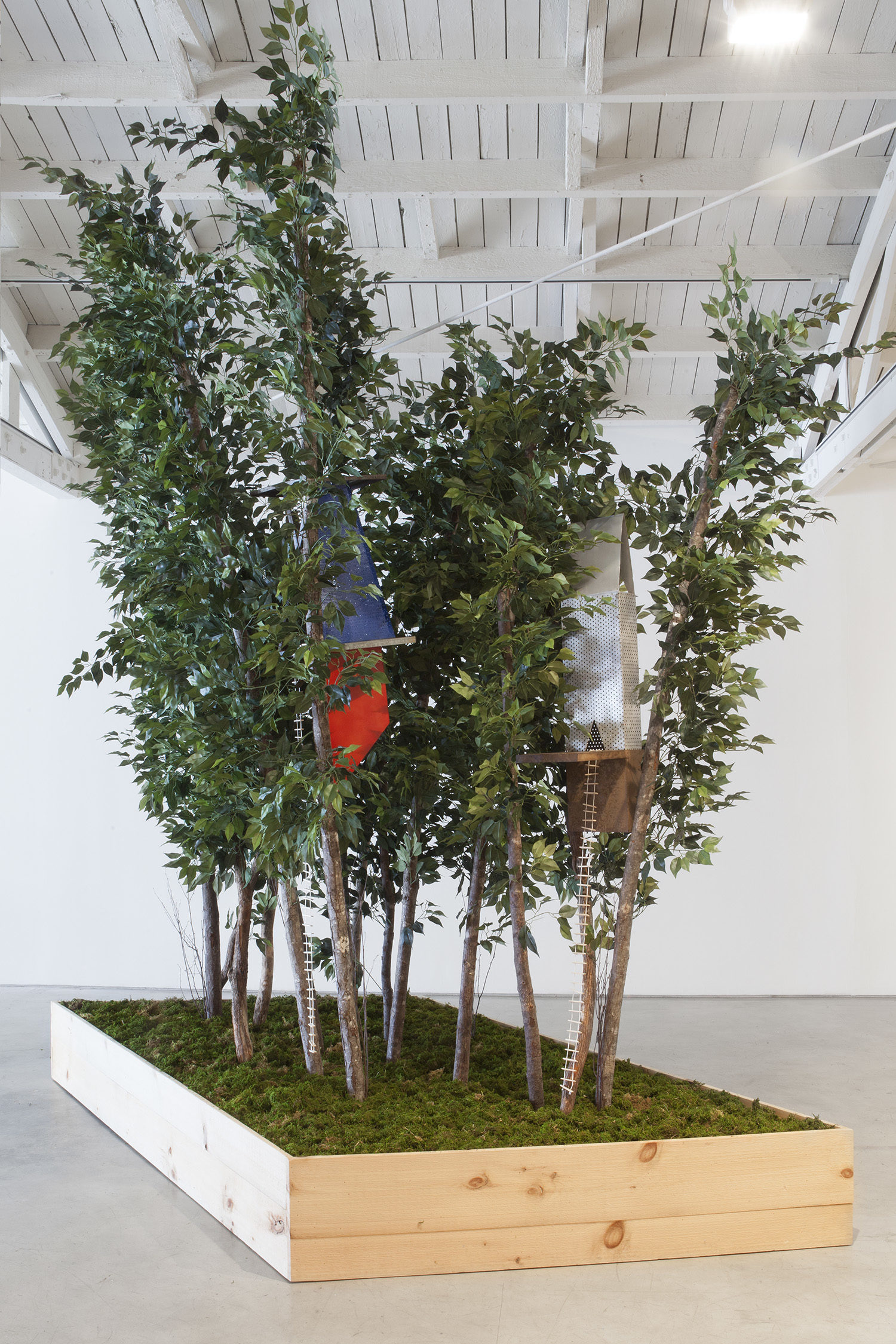
Dennis Oppenheim
Tree House Structure for Poisoned Soil #1, #2, #3, 1978
Wood, silk trees, fiberglass, perforated metals, baked enamel on steel, and rope ladders
144 x 144 x 96 inches
(366 x 366 x 244 cm)
Photograph courtesy of Morán Morán
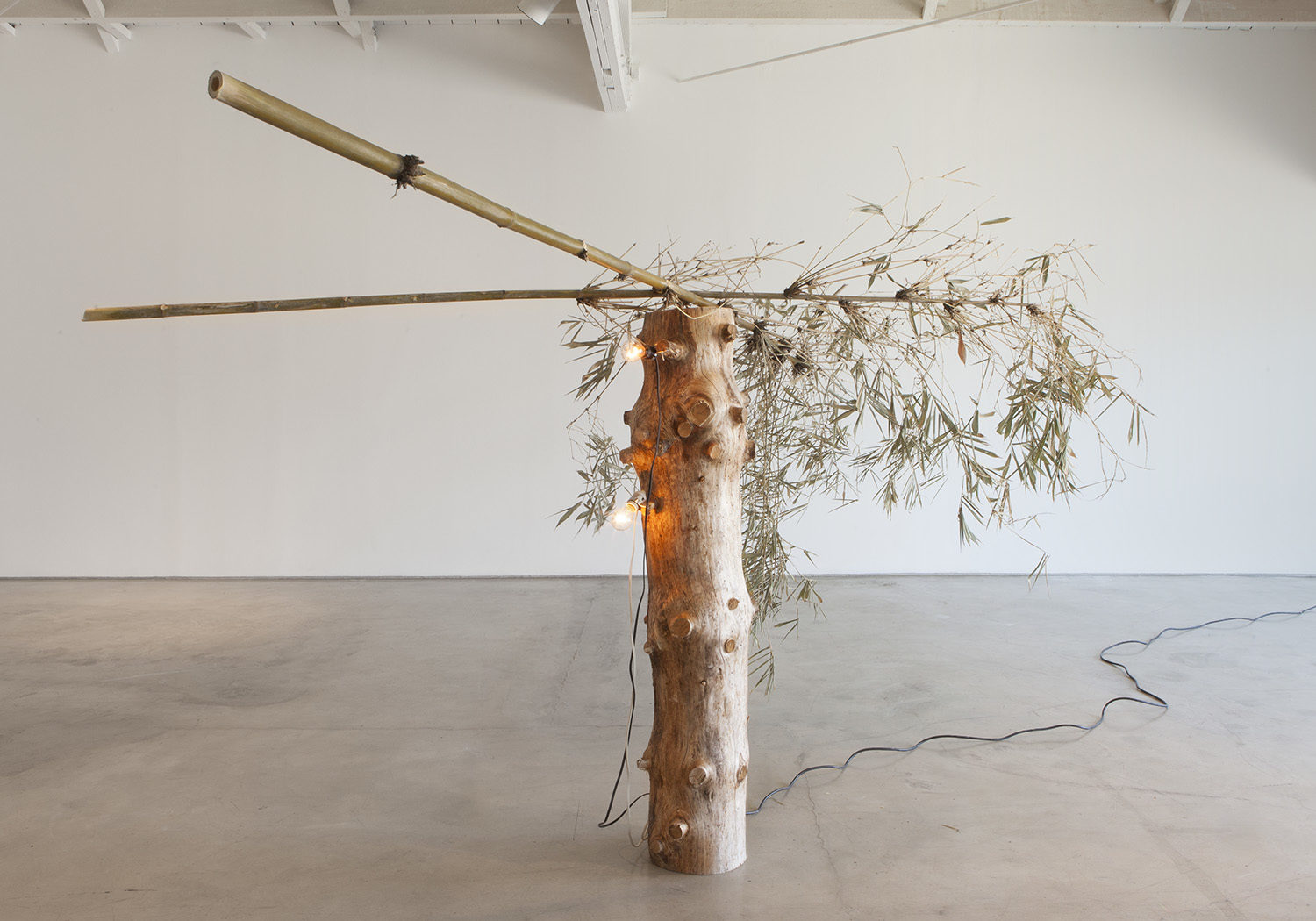
Virginia Overton
Untitled (log with bamboo), 2016-17
White pine, bamboo fronds, two incandescent light bulbs, and extension cords
80 x 176 x 164 inches
(203 x 447 x 416.5 cm)
Photograph courtesy of Morán Morán
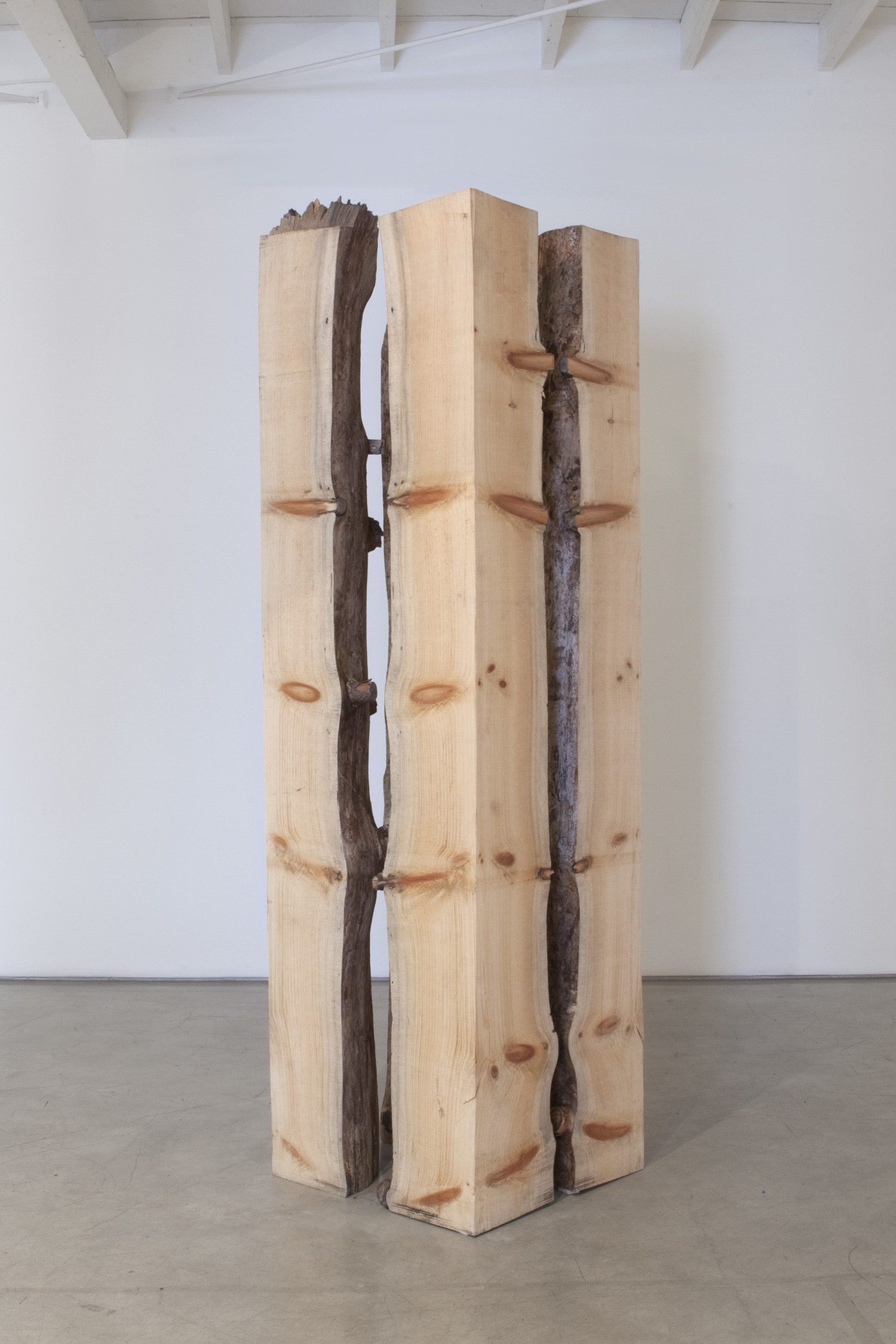
Virginia Overton
Untitled (Quartered Pine), 2016
Eastern white pine
99 x 27.75 x 25.75 inches
(251.5 x 70.5 x 65.5 cm)
Photograph courtesy of Morán Morán
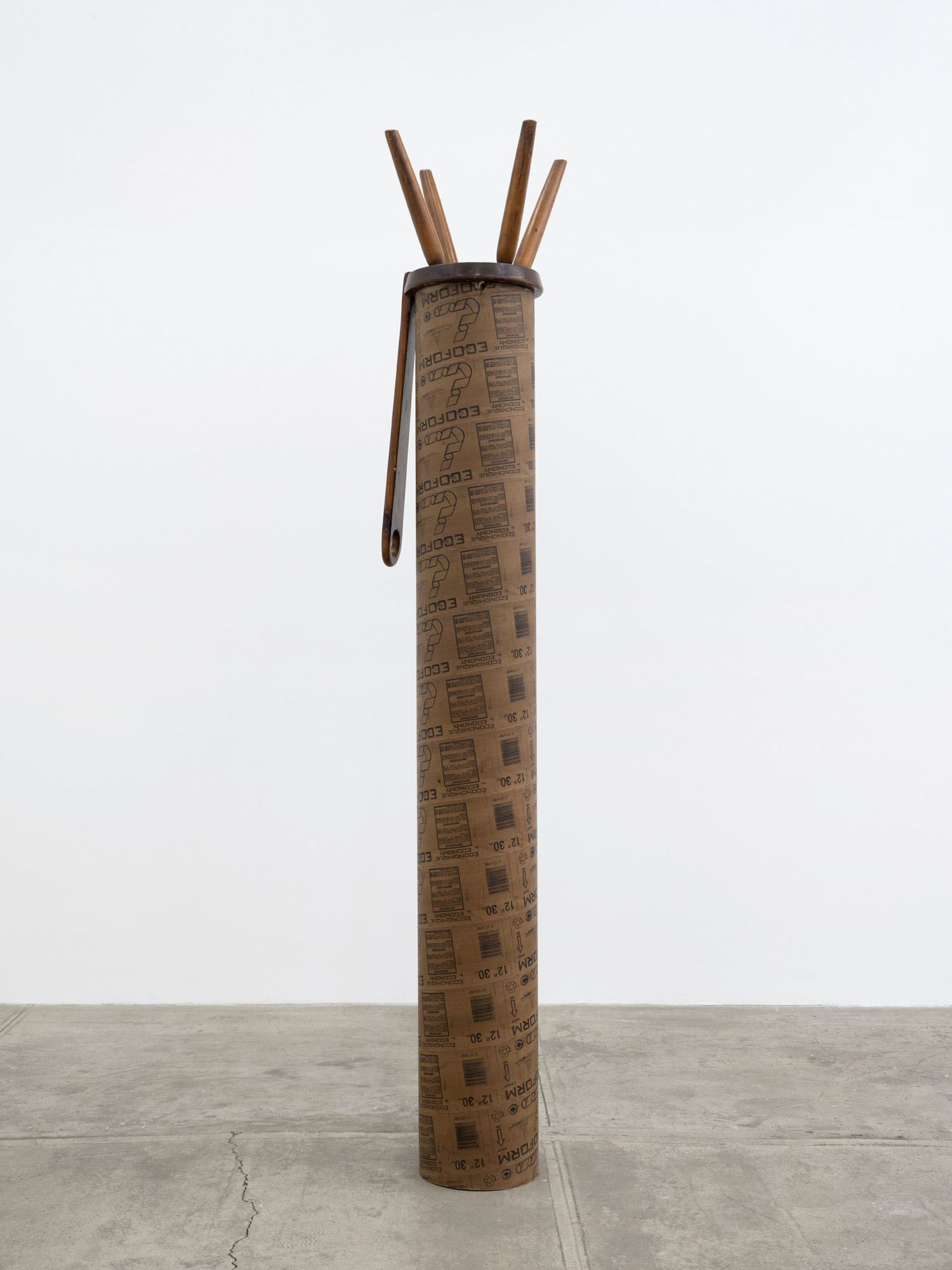
Virginia Overton
Untitled (brown piece), 2016
Cardboard tube and wooden chair
99.75 x 13.5 x 15.5 inches
(253.5 x 34 x 39.5 cm)
Photograph courtesy of Morán Morán
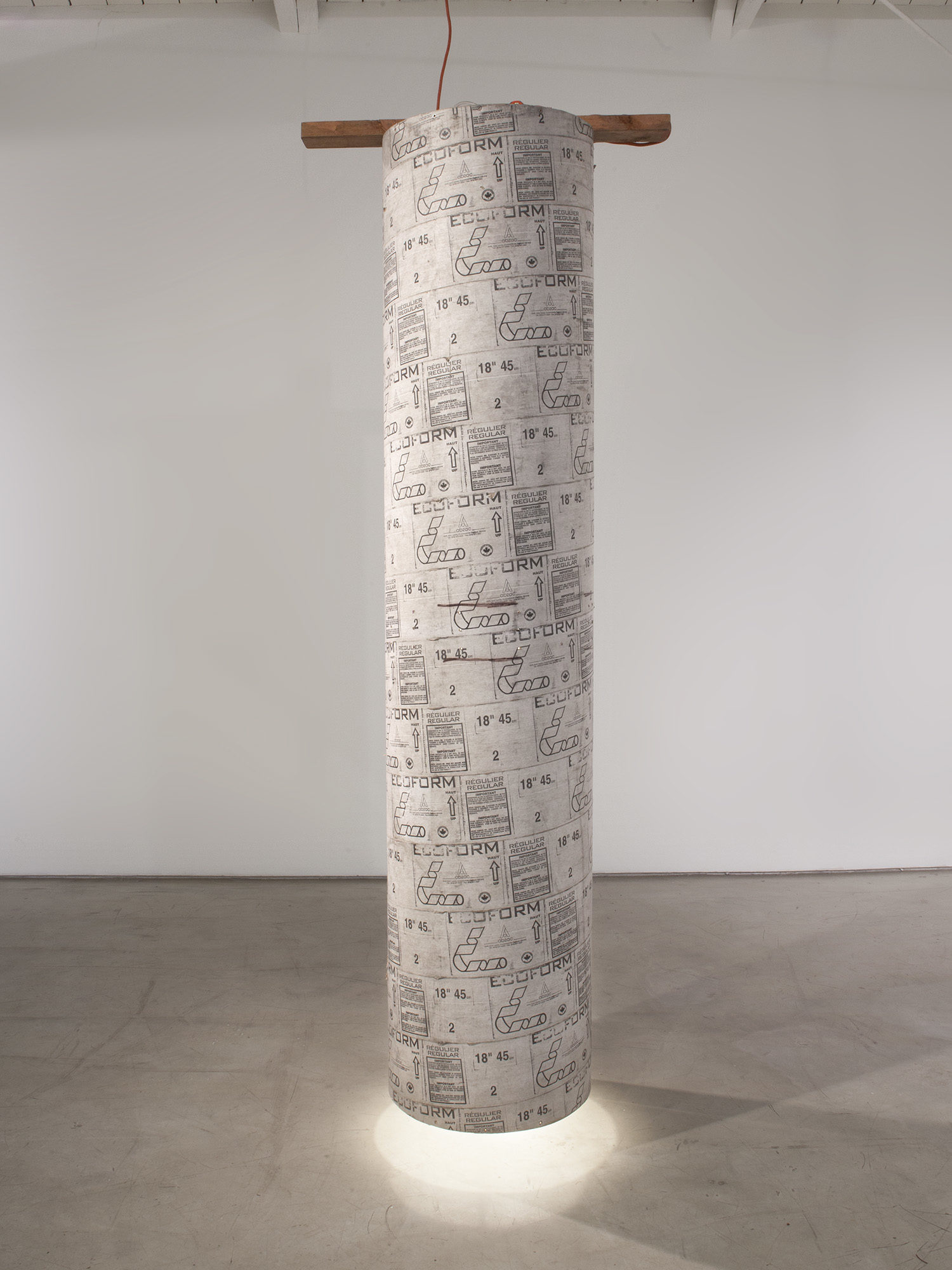
Virginia Overton
Untitled (ecoform aerator), 2016
Cardboard tube, steel, wood, water, aerator, light fixture, and extension cord
95.5 x 41 x 26.5 inches
(242.5 x 104 x 67.5 cm)
Photograph courtesy of Morán Morán
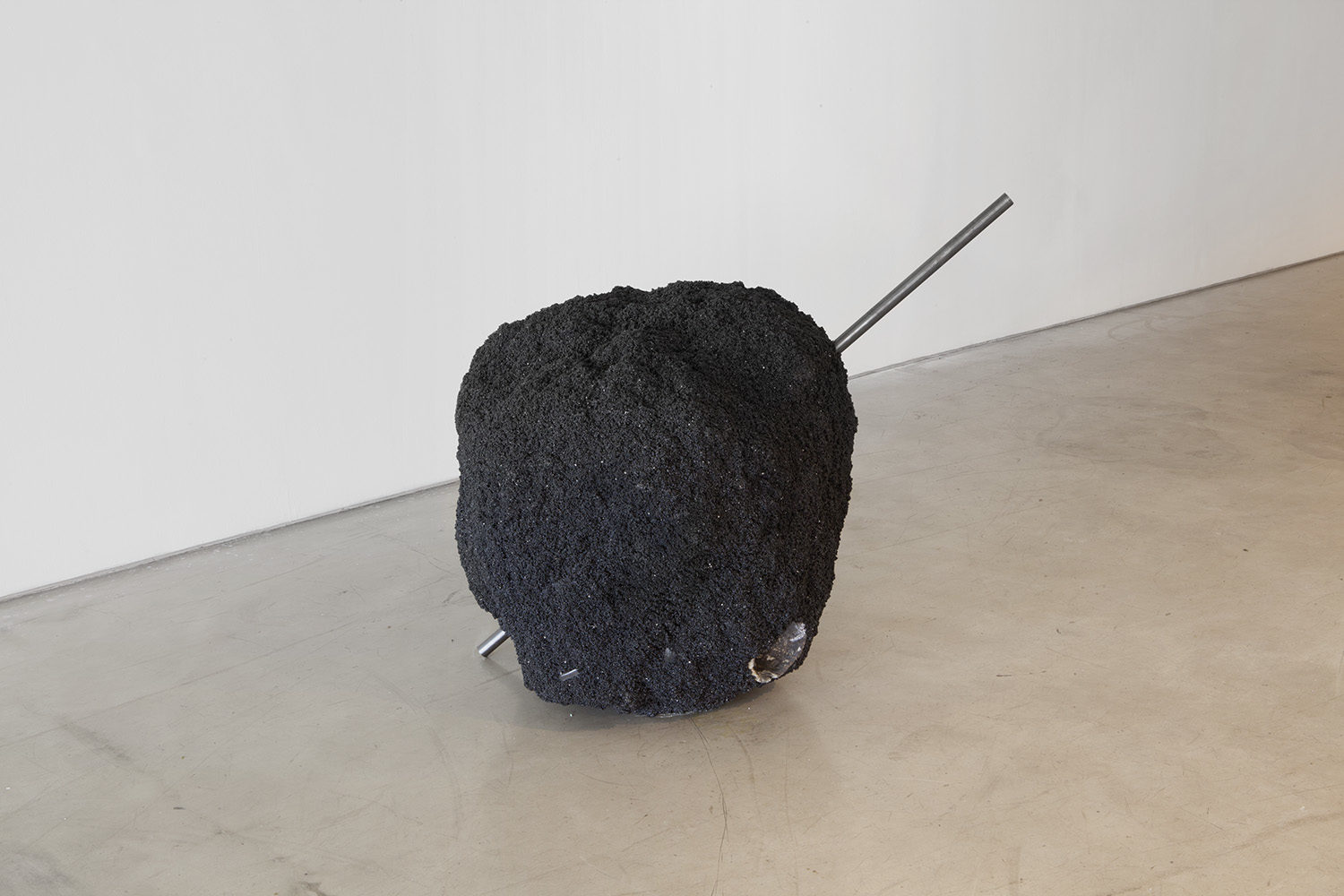
Nick van Woert
Coal Rock, 2014
Coal slag, steel, crucible, and polyurethane resin
43 x 64.5 x 40 inches
(109 x 164 x 101.5 cm)
Photograph courtesy of Morán Morán
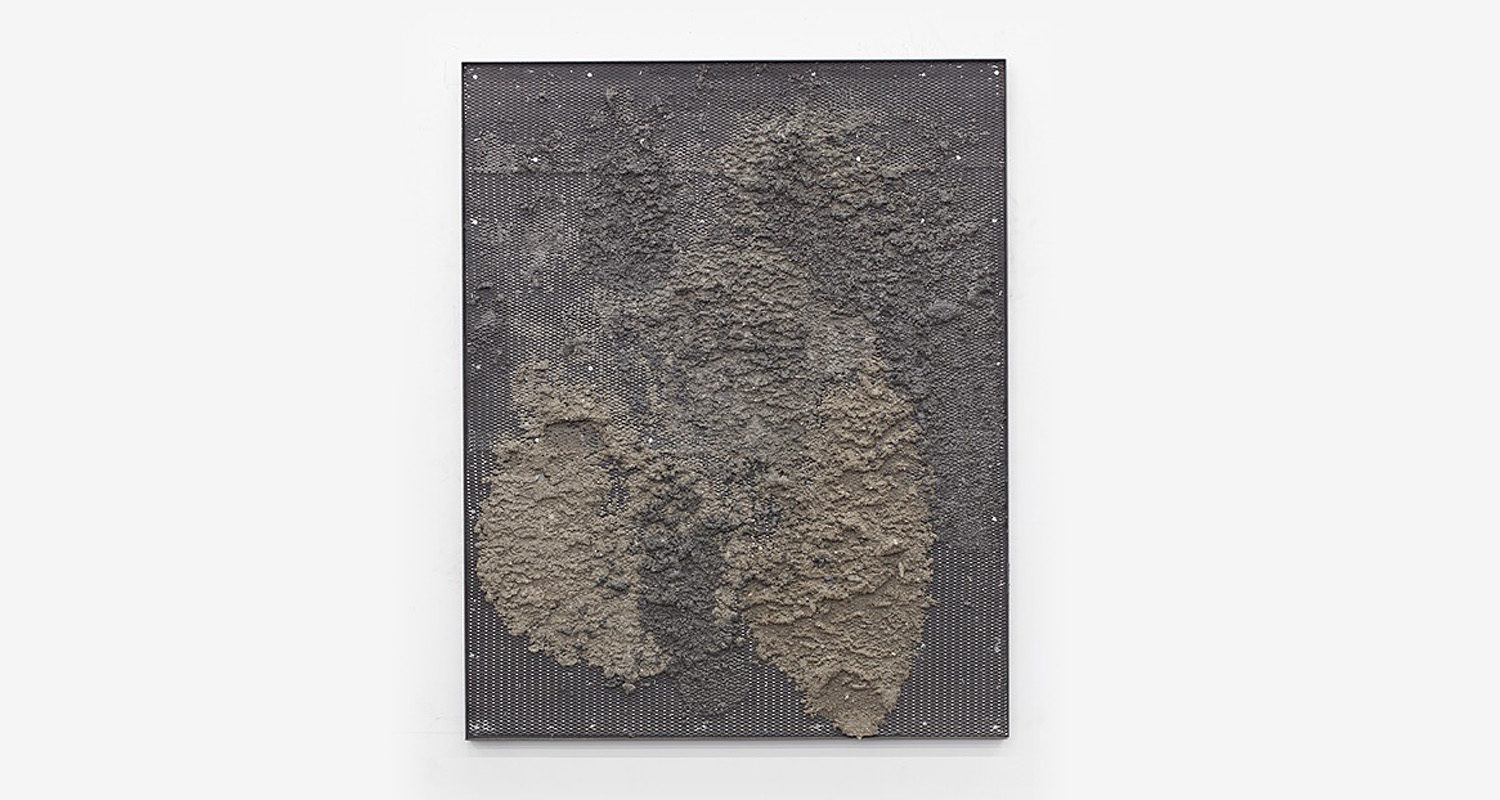
Nick van Woert
Stucco (brown), 2014
Coal slag, steel mesh, tar paper, plywood, steel frame
60 x 48 x 2 inches
(152.5 x 122 x 5 cm)
Photograph courtesy of Morán Morán
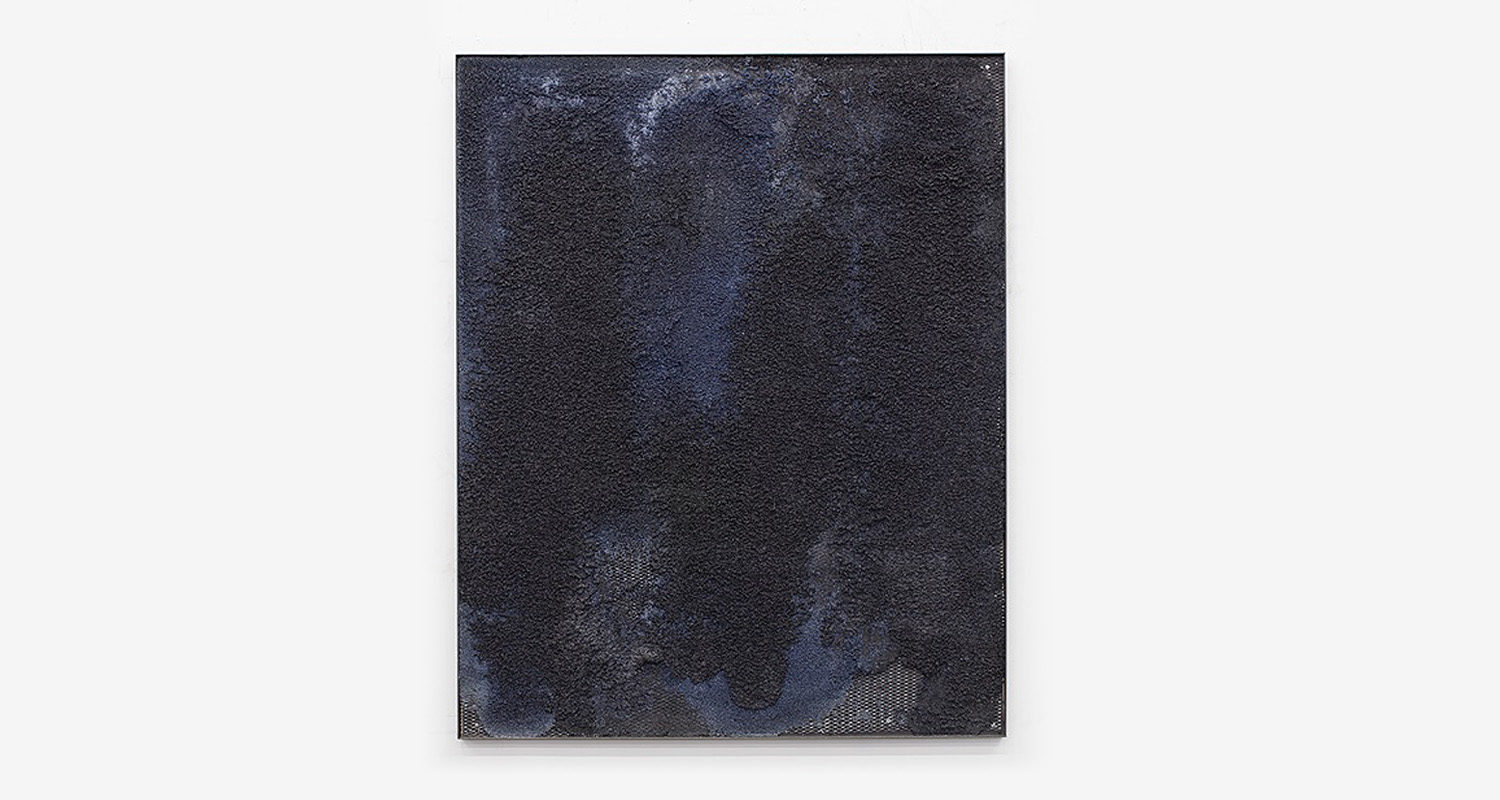
Nick van Woert
Stucco (blue), 2014
Coal slag, steel mesh, tar paper, plywood, steel frame
60 x 48 x 2 inches
(152.5 x 122 x 5 cm)
Photograph courtesy of Morán Morán

